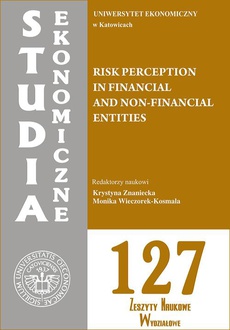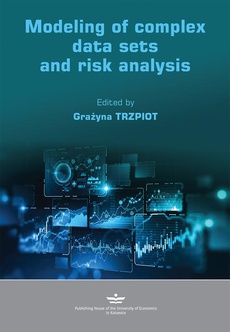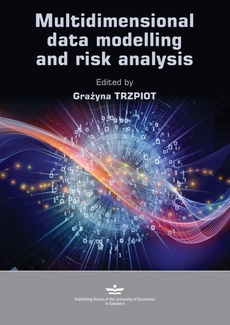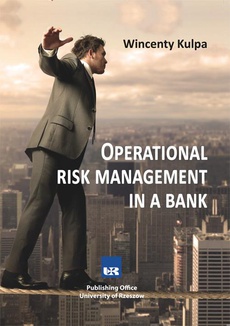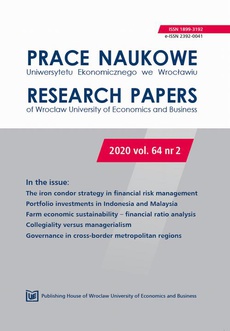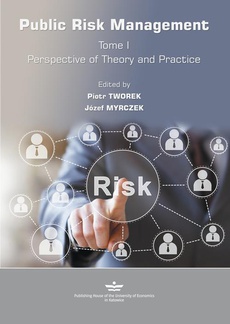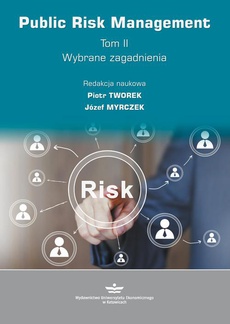POLECAMY
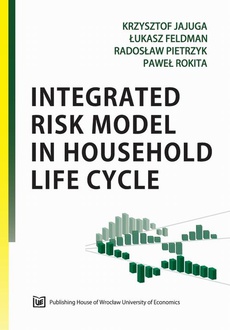
Integrated risk model in household life cycle
Redakcja:
Krzysztof Jajuga, Łukasz Feldman, Radosław Pietrzyk, Paweł Rokita
Format:
ibuk
„This monograph [...] will be an interesting and inspiring reading matter for a broad public”.
prof. dr hab. Grażyna Trzpiot
University of Economics in Katowice
”The book is the fi rst study of this kind in Poland and, I think, a unique one on a global level. This is thanks to the originality of the models proposed there, as well as because of a holistic approach adopted by the Authors. Using this approach, they explain mechanisms and determinants of a household’s functioning throughout its whole life cycle, particularly in terms of the fi nancial effects”.
dr hab. Zbigniew Krysiak
Warsaw School of Economics
| Rok wydania | 2015 |
|---|---|
| Liczba stron | 298 |
| Kategoria | Inne |
| Wydawca | Wydawnictwo Uniwersytetu Ekonomicznego we Wrocławiu |
| ISBN-13 | 978-83-7695-528-5 |
| Język publikacji | polski |
| Informacja o sprzedawcy | ePWN sp. z o.o. |
Ciekawe propozycje
Spis treści
| Introduction | 9 |
| 1 Financial planning in a household | 13 |
| 1.1 Basic problems of personal finance | 14 |
| 1.2 Financial planning in personal finance | 19 |
| 1.3 Decision making by individuals and households | 27 |
| 1.3.1 Needs and preferences of household’s members | 27 |
| 1.3.2 Decision making process | 30 |
| 1.3.3 Utility theory | 32 |
| 1.3.4 Utility-based choice theory | 36 |
| 1.4 Intertemporal choice and consumption models | 42 |
| 2 Risk in personal finance | 53 |
| 2.1 Risk – basic concepts | 53 |
| 2.2 The role of risk in household financial planning | 60 |
| 2.3 Types of risk and risk factors | 67 |
| 2.3.1 Life-length risk | 74 |
| 2.3.2 Risk of investments and financing | 77 |
| 2.3.3 Income risk | 80 |
| 2.3.4 Risk of events (insurance-like events) | 82 |
| 2.3.5 Risk of goal realization | 83 |
| 2.3.6 Operational risk of plan management (the risk of plan implementation) | 86 |
| 2.3.7 Model risk | 89 |
| 2.4 Measurement of risk | 91 |
| 2.4.1 Risk measures based on the statistical distribution of risk variable | 92 |
| 2.4.2 Risk measures based on the dependence on risk factors | 99 |
| 2.4.3 Risk measurement for a discrete variable | 99 |
| 2.4.4 Risk measurement for the time variable | 101 |
| 2.4.5 Extreme risk measurement | 103 |
| 2.4.6 Risk measurement in a multivariate case | 105 |
| 2.4.7 Concluding remarks | 107 |
| 2.5 Steering of risk | 108 |
| 3 Household – definition, preferences and goals | 115 |
| 3.1 Definition of the household | 116 |
| 3.2 Financial goals of households | 118 |
| 3.2.1 Type I (Child) | 124 |
| 3.2.2 Type II (Retirement) | 125 |
| 3.2.3 Type III (House) | 126 |
| 3.2.4 Type IV (Endowment) | 128 |
| 3.2.5 Type V (Bequest) | 129 |
| 3.3 Stochastic goals in household financial planning | 130 |
| 3.3.1 Time and magnitude distributions | 133 |
| 3.3.2 Child’s birth moment | 134 |
| 3.3.3 House value and purchase time | 136 |
| 3.3.4 Distribution of household end (for the moment of bequest goal realization) | 137 |
| 3.3.5 Distribution of the survival scenario | 138 |
| 3.4 Financing of the goals | 138 |
| 3.4.1 Pre-financing | 139 |
| 3.4.2 Post-financing | 140 |
| 3.4.3 Remarks on pre- and post-financing cash flows | 142 |
| 3.4.4 Contingency financing | 142 |
| 3.5 Household preferences | 144 |
| 3.5.1 Utility function and risk aversion | 144 |
| 3.5.2 The bequest motive | 146 |
| 3.5.3 Multiple goals | 150 |
| 3.5.4 Preferences in the model | 153 |
| 4 Household financial planning model | 160 |
| 4.1 General concepts and assumptions | 161 |
| 4.1.1 Main financial categories | 161 |
| 4.1.2 Critical dates | 166 |
| 4.1.3 Retirement investment schemes | 168 |
| 4.1.4 The role of the bequest motive | 175 |
| 4.2 Life-length risk aversion in the model | 176 |
| 4.3 A model with the retirement goal only | 180 |
| 4.4 Extension to include other financial goals | 189 |
| 4.4.1 Augmenting the model by the stochastic child’s birth time | 189 |
| 4.4.2 Type III goal in the model | 191 |
| 4.4.3 Including Type III goal using quantiles of real estate price distribution | 193 |
| 4.5 Financing goals and risk of financing | 195 |
| 5 Including risk in the household financial planning model | 197 |
| 5.1 Considered types of risk and the way of incorporating them into the model | 197 |
| 5.2 Integrated measures of risk | 203 |
| 5.2.1 Residual Wealth at Risk (RWaR) | 206 |
| 5.2.2 Residual Wealth Volatility (RWV) | 208 |
| 5.2.3 Residual Wealth Aspiration Level (RWAL) | 209 |
| 5.2.4 Lifetime Cumulated Net Cash Flow at Risk (LCNCFaR, LCaR). | 210 |
| 5.2.5 Incremental shortfall (ISh) | 213 |
| 5.2.6 Shortfall Scenario Probability (ShSP) | 214 |
| 5.2.7 Household Default Probability (HDP) | 215 |
| 5.3 Managing plan under risk | 218 |
| 6 The model at work – numerical examples and analysis of model properties | 223 |
| 6.1 The width of the range of concern and plan performance under life-length risk | 225 |
| 6.2 The role of the consumption preference and the bequest motive – numerical example | 239 |
| 6.3 Life-length risk sharing within a couple | 246 |
| 6.4 Risk of investment in the model – numerical examples | 261 |
| 6.5 Summary of numerical examples | 281 |
| Conclusions | 284 |
| References | 286 |
| List of figures | 293 |
| List of tables | 295 |















